The Evolution and Impact of CAM in 3D Printing
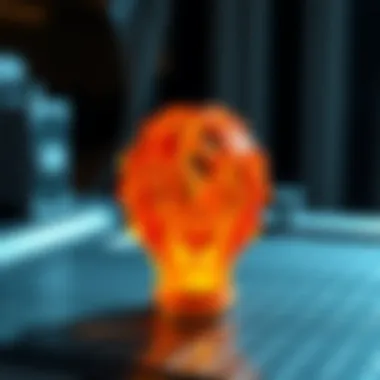

Intro
The landscape of modern manufacturing is transforming rapidly, particularly thanks to the rise of 3D printing technology. At the heart of this evolution lies Computer-Aided Manufacturing (CAM), a critical component that bridges the gap between design and production. This pairing of CAM with 3D printing doesn't just streamline processes; it reshapes how products are conceived, created, and delivered.
The tech-savvy world we inhabit now relies on the finely-tuned interplay between digital and physical realms, allowing for unparalleled speed, accuracy, and customization. Whether you're in aerospace, healthcare, or any other sector that values precision and efficiency, CAM is increasingly recognized as an indispensable tool.
As we trace the historical context that brought CAM to the forefront, the significance of its integration within 3D printing cannot be overstated. Today, it has revolutionized traditional manufacturing approaches, pushing boundaries that were once thought immutable. The following sections will unravel this exciting journey while examining the crucial applications, advantages, and challenges that come into play with the marriage of CAM and 3D printing.
This article will provide insights aimed at students, researchers, educators, and professionals, ensuring a deeper understanding of how CAM impacts the fabric of manufacturing across industries.
Preamble to CAM in 3D Printing
Computer-Aided Manufacturing, commonly referred to as CAM, plays an integral role in the landscape of 3D printing. The confluence of these technologies has emerged as a cornerstone of modern manufacturing processes, enabling greater precision and customization than ever before. As we traverse the intricacies of CAM's application within 3D printing, it’s important to grasp its significance not only in terms of operational efficiency but also in fostering innovation across numerous sectors.
Why is CAM Important?
Firstly, CAM systems simplify the design-to-production process, streamlining workflows and facilitating real-time integration. This allows designers and engineers to spend less time wrestling with manual setups and more time focused on creativity and problem-solving. For instance, a mechanical engineer working on a prototype can directly visualize the implications of their design choices and swiftly adjust specifications, saving both time and resources. The capacity for rapid adjustments is particularly vital in industries where product lifecycles are short and market responsiveness is crucial.
Secondly, leveraging CAM promotes a remarkable level of accuracy. With the automation of machining processes, manufacturers can achieve a higher consistency in production outputs—a feat that traditional manufacturing methods struggled to attain. This enhanced accuracy reduces the likelihood of defects and minimize scrap material, leading to more sustainable practices in manufacturing.
"The efficient integration of CAM with 3D printing technologies fosters a more sustainable and responsible approach to production that the traditional methods lack."
Additionally, the adaptability Cam in 3D printing offers is truly transformative. Companies can create bespoke products tailored to individual consumer needs, a capability that’s increasingly desirable in today’s market culture. This customization accelerates product development cycles while nurturing a competitive edge. More importantly, the intersection of CAM and 3D printing allows for the exploration of materials that had been considered impractical before—opening doors to innovations previously trapped in the realm of theoretical studies.
As we delve deeper into this article, we will explore the historical backdrop that informs the current landscape of CAM and 3D printing, dissect the technological frameworks that underpin these innovations, and unravel the ongoing evolution that continues to shape the manufacturing sector.
Historical Perspective
Understanding the historical development of Computer-Aided Manufacturing (CAM) in relation to 3D printing is crucial for grasping how far technology has come and where it is heading. The roots of CAM technology provide insight into not just the evolution of manufacturing processes but the profound changes that occurred due to advancements in computing power and software engineering. This section delves into the intricate journey from the inception of CAM systems to their integration in 3D printing, offering context around how these systems revolutionized production capabilities across various sectors.
The Origins of CAM Technology
The genesis of CAM can be traced back to the mid-20th century. During this period, the quest for efficiency and precision led engineers to explore the potential of computers in manufacturing. Initially, CAM was like an unpolished gem; its capabilities were limited but promising. The early systems were primarily used for controlling milling machines and lathes through numerical control (NC) technology.
At this stage, manufacturing relied heavily on manual processes, which often resulted in human error and inefficiencies. CAM emerged as a vital tool, allowing for greater control and automation in machining tasks. As computer technology advanced, it became evident that the future of manufacturing would lean heavily on these innovations. The introduction of CAD (Computer-Aided Design) in the 1960s further set the stage for CAM’s evolution, as it allowed designers to create intricate models that could be directly translated into manufacturing instructions.
Development of 3D Printing
The development of 3D printing commenced in the 1980s, parallel to the advancements in CAM technology. The first 3D printing technique, known as stereolithography, was patented by Chuck Hull in 1986. This groundbreaking method utilized a UV laser to solidify liquid resin layer by layer. While 3D printing began mainly as a prototyping tool in design and applications, it quickly demonstrated its potential for direct manufacturing—an idea that would soon converge beautifully with CAM.
As the understanding of additive manufacturing grew, businesses began experimenting with various materials; plastics, metals, and even bio-materials found their way into 3D printers. This evolution posed new challenges in terms of software and machine compatibility, emphasizing the need for newer CAM systems that could seamlessly integrate with 3D printing processes.
Milestones in CAM Integration
The integration of CAM into 3D printing processes marks several significant milestones that shaped the landscape of modern manufacturing. Here are key moments worth noting:
- Early 1990s: The first CAM systems began to incorporate 3D printing capabilities, which allowed more complex parts to be manufactured directly from digital files. This was a game-changer for industries needing rapid prototyping.
- 2000s: The emergence of new materials and lower-cost machinery made 3D printing accessible to smaller businesses and educational institutions. CAM systems adapted to include support for these new technologies, vastly improving their usability and application scope.
- 2010 Onwards: The rise of sophisticated software platforms brought about user-friendly interfaces, making it easier for operators to navigate the intricacies of creating print files. CAM software evolved to integrate with various 3D printers, enabling more efficient workflows.
- Present Day: Today, the collaboration between CAM and 3D printing is integral in industries ranging from aerospace to healthcare. It showcases what can be achieved when precision manufacturing meets innovative printing processes.
"The historical journey of CAM technology is a tale of innovation and evolution, illustrating how the interplay of computer capabilities and manufacturing needs transformed industries."
Technology Behind CAM in 3D Printing
The realm of Computer-Aided Manufacturing (CAM) in 3D printing stands as a testament to technological advancement and innovation in manufacturing domains. This section emphasizes the critical role that both software applications and hardware play in the CAM landscape, highlighting how these components work together to enhance the effectiveness and efficiency of 3D printing processes. Understanding these technologies is vital, as they not only streamline workflows but also open doors to improved productivity and creativity in various sectors.
Software Applications
The software utilized in CAM for 3D printing is pivotal for transforming design visions into tangible products. These applications serve multiple functions, from designing parts to optimizing manufacturing processes. Leading software like Autodesk Fusion 360 and SolidWorks allow users to create 3D models and simulations with remarkable precision. Such tools are not just for design; they also provide functionality for toolpath generation, which is essential for guiding 3D printers in the creation of complex geometries.
- Design Capabilities: CAD software gives engineers and designers the ability to visualize their products before any material is used. This is particularly crucial in industries like aerospace and medical devices, where every detail counts. A slight error can lead to significant issues down the line.
- Simulation Features: Many CAM software platforms also come with simulation tools that predict how a manufactured part will react under stress or other conditions. This predictive capability is invaluable, enabling designers to make iterative adjustments—preventing costly mistakes.
"Quality in manufacturing isn't just a checkbox; it's built into each layer of the 3D printed object."
- Integration with Hardware: The software works hand-in-hand with the hardware. For instance, slicing software translates a 3D model into a format that the printer can understand, breaking down the model into layers that the printer can build upon.
As these software solutions evolve, they also incorporate artificial intelligence to learn from past designs and settings, further optimizing the process. Users are not just creating parts; they are developing an understanding of how their changes impact outcomes, fostering a culture of continuous improvement.
Hardware Essentials
The hardware underpins the entire CAM operation, determining how effectively the digital designs are brought into the physical world. The importance of choosing the right 3D printer cannot be understated. Printers vary greatly in terms of technology—FDM, SLA, SLS—and each type has unique advantages, depending on the application.
- 3D Printers: At the core are the printers themselves. For instance, the Stratasys F370 is favored in educational institutions for its versatility, while the Formlabs Form 3 is renowned for producing high-quality resin prints. The selection often hinges on the type of material being used and the resolution required.
- Post-Processing Equipment: After printing, components typically require additional processing to achieve the desired finish or increase durability. This might include curing, sanding, or even painting. Understanding how each of these hardware elements interacts is vital for achieving the best possible outcomes.
- Production Equipment: Additionally, the hardware encompasses not just printers but also the support equipment that aids in quick turnarounds. Automated systems can assist in managing multiple printers simultaneously, enhancing production efficiency.
CAM Workflow in 3D Printing
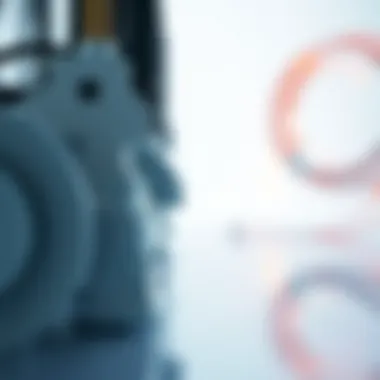
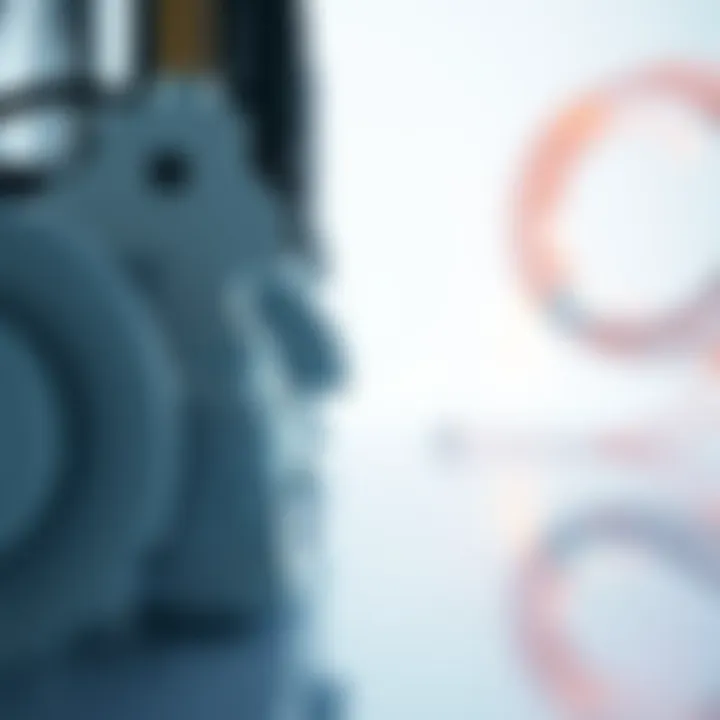
The workflow of Computer-Aided Manufacturing (CAM) in the realm of 3D printing is a pivotal element that bridges the gap between digital designs and tangible products. This section delves into how the CAM workflow not only brings efficiency and accuracy but also addresses various practical considerations when it comes to transforming innovative ideas into reality. At its core, this workflow encapsulates the entire journey from design to production, making it a fundamental aspect of additive manufacturing.
Design to Production
The first phase of the CAM workflow begins with translating conceptual ideas into detailed designs using computer-aided design (CAD) software. This is not just about sketching, but involves a thorough understanding of the intended functionality and aesthetic of the final product. During this stage, considerations regarding material compatibility and manufacturing limits should be top of mind.
Once the design is ready, it's fed into the CAM systems where software prepares the machine for printing. This step includes slicing, where the software segments the model into layers that the printer will create one at a time. It’s more meticulous than counting sheep to fall asleep; precise slicing can make or break the quality of the print. The software must also account for optimal pathing and speed to minimize print time while ensuring accuracy.
An important note: the choice of materials plays a crucial role here. Different materials have varying melting points and behavior under heat, and as any savvy maker will tell you, using the right material can mean the difference between a brilliant prototype and a melted puddle.
Post-Processing Techniques
After a successful print, the journey isn't quite over. Post-processing is an often overlooked but essential phase in the CAM workflow that fine-tunes the final product. This can involve several techniques, each serving a unique purpose aimed at enhancing the print's functionality or appearance.
Some common post-processing methods include:
- Sanding and Smoothing: Eliminates layer lines from the printing process, yielding a smoother surface.
- Painting or Coating: Enhances aesthetics and provides additional protection from wear and tear.
- Assembly: Sometimes parts are printed separately and need to be assembled after printing.
Post-processing is where the magic happens; it’s the fine-tuning that elevates a good print to a great one.
Each of these techniques, while seemingly simple, requires a skilled hand for optimal results. Missteps during post-processing can lead to catastrophic failures, so attention to detail during this phase is paramount.
In summary, the CAM workflow in 3D printing encompasses a comprehensive approach from design to the final polish of a product. Understanding and mastering this workflow is vital for individuals and industries aiming to harness the full potential of 3D printing technology. The benefits include improved efficiency, reduced time wasted in production, and ultimately, higher quality outcomes, making it a cornerstone of modern manufacturing practices.
Applications of CAM in Various Industries
The applications of Computer-Aided Manufacturing (CAM) in various industries are crucial as they mark the intersection of technology and practical use in today's fast-paced manufacturing environment. CAM has not only streamlined production processes but has also provided innovative solutions to longstanding challenges. By integrating CAM into 3D printing, industries benefit from improved accuracy, customized designs, and enhanced efficiency. This flexibility is particularly valuable across diverse sectors from aerospace to consumer goods, paving the way for progress that keeps pace with modern demands.
Aerospace Industry
Within the aerospace sector, the application of CAM combined with 3D printing is nothing short of revolutionary. The complexity of components—think of the intricate parts such as turbine blades or lightweight structures—means that traditional manufacturing methods often fall short. Here, CAM tools assist engineers in producing these components accurately and efficiently. For instance, by enabling the production of lightweight components that have high mechanical strength, companies can improve fuel efficiency and reduce emissions.
Moreover, the ability to produce parts on-demand reduces the need for excessive inventory, which is a boon in an industry where costs soar. The precision of CAM also extends to ensuring that parts fit together seamlessly, minimizing the risk of mechanical failures.
Medical Field
In the medical sector, CAM in 3D printing takes on a transformative role by personalizing healthcare solutions. Customized prosthetics and implants that are tailored to an individual's anatomy can be crafted through this technology. Such bespoke solutions lead to better patient outcomes and comfort.
For example, consider orthopedic implants that are produced using CAM software, which analyzes patient data to construct a perfect fit. This precision maximizes performance while decreasing the risk of complications post-surgery. Additionally, surgical models can be created based on patient scans, allowing surgeons to practice complex procedures beforehand, thus enhancing the likelihood of success during actual operations.
Automotive Sector
The automotive industry has adopted CAM in 3D printing not merely as a convenience but as a necessity for innovation and competitiveness. Companies can quickly produce prototypes for testing new designs, vastly reducing the time it takes to bring a new vehicle model from conception to reality.
One significant advantage here is the ability to create lightweight components that don't compromise on performance. This leads to vehicles that are not only faster but also fuel-efficient. Furthermore, as sustainability becomes a priority in manufacturing, CAM-enabled processes allow for more efficient use of materials, ultimately reducing waste during production.
Consumer Goods
Lastly, the consumer goods sector has seen CAM's influence as a game-changer in product design and production. Companies today can create bespoke products that cater to specific consumer preferences. This capability opens the door for businesses to engage customers like never before, promoting brand loyalty by allowing for the customization of goods based on individual tastes.
For instance, furniture manufacturers can use CAM to produce unique designs that accommodate specific spaces or styles requested by customers. This leads to reduced lead times and enhances the customer experience, helping businesses maintain a competitive edge in a crowded marketplace.
"The capabilities of CAM in 3D printing lead to practical applications that improve efficiency and expand possibilities for customization across various sectors."
The integration of CAM in different industries paints a picture of technology that not only simplifies processes but also augments innovation. As we delve deeper into the specific benefits of CAM in these applications, it becomes clear that the future of manufacturing lies in its ongoing adaptation to these advanced methodologies.
Benefits of CAM in 3D Printing
The inclusion of Computer-Aided Manufacturing (CAM) in 3D printing has ushered in a plethora of benefits that shape the way industries function today. This significant relationship enhances the capability of traditional manufacturing by injecting speed, precision, and cost-effectiveness into processes that once required a more manual touch. In essence, it's not just about making things; it's about making them better.
With the rise of automation, it's vital to understand the specific advantages CAM brings to the manufacturing table. Let’s take a closer look.
Enhanced Accuracy
One of the standout features of CAM within the context of 3D printing is the enhanced accuracy it provides. This precision is pivotal in various fields, especially where detailed design plays a critical role, such as aerospace and medical device manufacturing. CAM systems translate intricate design specifications into executable data for 3D printers. As a result, each layer printed is precisely calibrated to fit what’s on the computer screen.
For instance, in the production of custom prosthetics, even the minutest deviation can lead to dysfunctional results. Here, having CAM allows engineers to achieve a perfect fit tailored to individual needs. The meticulous nature of CAM ensures that designers can expect closer-to-perfect replicas of their digital models, marking a significant leap forward in manufacturing standards.
Cost Efficiency
Cost efficiency in producing goods is something that often keeps business owners awake at night. However, integrating CAM with 3D printing can be the balm to those sleepless nights. By reducing waste through accurate modeling, companies can optimize the amount of material used. This not only saves money but also aligns with sustainable practices that are becoming more necessary in today’s eco-conscious environment.


To illustrate this point, take the automotive industry, which has embraced CAM to swiftly prototype new parts. Not only does it trim costs associated with material waste, but it also lowers long-term production expenses thanks to its ability to streamline workflows. Companies that adopt this technology find themselves cutting down labor costs as well, because less manual intervention means less room for human error, leading to fewer reworks.
Increased Speed of Production
In the fast-paced world we live in, speed is essential. CAM in 3D printing not only enhances output but also leaps across traditional production timelines. When designs get adjusted, they can be updated quickly within the CAM software, allowing printers to adapt almost in real-time. This flexibility stands in stark contrast to jury-rigged tools used previously where retooling could be a lengthy process.
In fields where time-to-market is crucial, such as consumer electronics, companies can roll out prototypes within days rather than months. Take for example the smartphone industry, which often utilizes 3D printing for rapid prototyping of new models. This increased speed not only enhances their competitive edge but also allows businesses to respond to market demands with startling agility.
"The marriage of CAM and 3D printing has redefined the landscape of modern manufacturing, making efficiency the new order of the day."
In summary, the importance of integrating CAM into 3D printing cannot be overstated. Enhanced accuracy leads to higher quality outcomes, cost efficiency helps keep financial resources in check, and increased speed of production facilitates an agile response to consumer needs. These benefits solidify CAM’s role not merely as an accessory, but as a cornerstone of contemporary manufacturing practices, ensuring industries can thrive in an ever-evolving marketplace.
Challenges and Limitations
The integration of Computer-Aided Manufacturing (CAM) within 3D printing technology is not without its roadblocks. Understanding the challenges and limitations becomes essential for a nuanced comprehension of the entire ecosystem. These challenges impact not only the effectiveness of CAM but also shape how industries adopt and adapt to this transformative technology. This section sheds light on some crucial aspects: technical hurdles, material constraints, and regulatory issues.
Technical Hurdles
First up on the list are the technical hurdles that can put a damper on the practical application of CAM in 3D printing. One major challenge relates to software compatibility. Often, there’s a mismatch between the CAD (Computer-Aided Design) software used for creating models and the CAM software responsible for processing those models for printing.
Another thorn in the side is the precision of algorithms involved. While CAM promises enhanced efficiency, inaccuracies in programming can lead to errors in production. Technical expertise is also a significant barrier. Not every facility has employees trained in both CAM and 3D printing, resulting in a bottleneck effect that stalls progress. As firms implement these technologies, they may face steep learning curves and resource allocation issues.
"The journey of mastering CAM in 3D printing is often paved with unexpected obstacles that challenge even the most seasoned professionals."
Material Constraints
Next, let’s drill down into the material constraints faced by organizations utilizing CAM in 3D printing. The variety of materials available for 3D printing is expansive, yet not every CAM software is optimized for them. Each material behaves differently during the printing process, and mismatched parameters can lead to failures.
For instance, metals require different stress handling compared to polymers. Unfortunately, many CAM systems do not sufficiently accommodate this variety, leading to limitations in adaptability. Additionally, the availability of advanced materials is often restricted due to production costs or environmental regulations. It is indeed a complex conundrum, as businesses need both the right material and suitable software to yield high-quality outcomes.
- High costs: Advanced materials such as composites can be expensive, putting them out of reach for small businesses.
- Limited Selection: Not all industries require every type of material, which can limit their need for diverse CAM solutions.
Regulatory Issues
The regulatory issues surrounding CAM and 3D printing are also multifaceted. As the technology evolves, the legal framework has not entirely kept up. Companies often grapple with the uncertainties of compliance, especially concerning safety and intellectual property.
Intellectual Property (IP) laws can be a double-edged sword; while they protect innovation, they can also stifle it by creating fear of infringement. Neglecting these laws can result in costly disputes. Moreover, industry-specific regulations—particularly in sectors like aerospace and medical—often add another layer of complexity. This can lead to delays in bringing solutions to market, creating a frustrating environment for innovators.
In summary, navigating the challenges associated with CAM in 3D printing isn’t merely an R&D problem; it cuts across operational, financial, and legal disciplines. Addressing these challenges holistically can pave the way for future innovations and smoother integration into the manufacturing process.
Future Directions for CAM in 3D Printing
The future of Computer-Aided Manufacturing (CAM) in 3D printing promises to be as dynamic as the technology itself. As the fields of manufacturing and design continuously evolve, so too does the need for advanced solutions that enhance efficiency and expand creativity. This section focuses on two significant areas shaping the landscape of CAM within 3D printing: emerging technologies and sustainability initiatives.
Emerging Technologies
Technology never sleeps, and as we look ahead, several advancements stand out in the CAM realm. One notable evolution is the incorporation of artificial intelligence (AI). AI can streamline the design process by predicting potential errors, optimizing materials, and automating routine tasks. For example, tools such as generative design actively simulate thousands of iterations in moments, leading to innovative solutions that a human designer might overlook.
Next, consider machine learning algorithms that can adaptively refine production processes based on historical data, leading to improved accuracy and reduced waste. This adaptation is crucial for industries where tolerances are tight, like aerospace or healthcare.
Another path lies in the development of multi-material printing technologies. By allowing different materials to be combined within a single print, manufacturers can create products with enhanced functionality and performance. Think about a smartphone casing that combines rigid structural elements with softer, shock-absorbing materials—all printed in a single run. The blend of functionalities opens doors for new product designs not seen before.
In addition, the use of cloud computing is gaining traction. This shift enhances collaborative efforts across teams geographically spread out. Designers and engineers can work simultaneously on models in real time, speeding up the feedback loop and improving end products. Furthermore, cloud-based CAM tools allow lower upfront costs and access to advanced software without the need for high-end hardware.
The combination of these technologies presents a rich landscape for innovation. The ability to meld capabilities opens up a fountain of creativity. As industries harness these tools, the barriers that constrict optimized and personalized manufacturing will continue to erode.
Sustainability Initiatives
Sustainability is becoming increasingly crucial in industry debates. The PEGI report (2021) underscores that a sustainable approach can not only drive down costs but also enhance a brand’s reputation. CAM in 3D printing plays a pivotal role in this transition.
First and foremost, reducing waste is key. Traditional manufacturing often involves subtractions, leading to excess material that ends up in landfills. However, additive manufacturing enables a more efficient usage of materials by building objects layer by layer, minimizing wastage. Industries are exploring biocompatible and recyclable filaments, such as polylactic acid (PLA), derived from corn starch or sugarcane. Embracing biodegradable materials could alter entire product life cycles positively.
Second, energy efficiency in production processes is receiving attention. New approaches in CAM are targeting reductions in energy consumption during printing. Technologies like selective laser sintering (SLS) use high-powered lasers, which might seem energy-intensive; however, ongoing improvements aim to use less overall energy through optimized print strategies.
Moreover, local production is an essential aspect of sustainability. By decentralizing production and enabling on-demand manufacturing, industries reduce the need for long-distance shipping. This localized approach not only cuts down carbon emissions associated with transport but also allows businesses to respond swiftly to market demands without relying on extensive inventories.
As the focus on sustainability grows, collaborative efforts become more pronounced. Organizations, from startups to established manufacturers, begin to work together to develop standards and practices that encourage eco-friendly initiatives. Sharing knowledge and resources creates a stronger foundation for the whole industry, enabling a larger impact.
Together, these emerging technologies and sustainability initiatives signal a pivotal moment in CAM’s journey. With a continuous push for improvements, the future of CAM in 3D printing holds considerable promise. As these developments unfold, they will reshape the manufacturing landscape, fostering innovations that were once thought to be mere dreams.
Interdisciplinary Research Opportunities
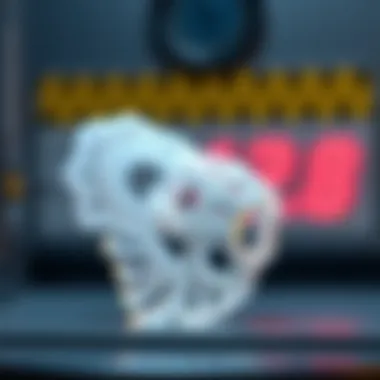
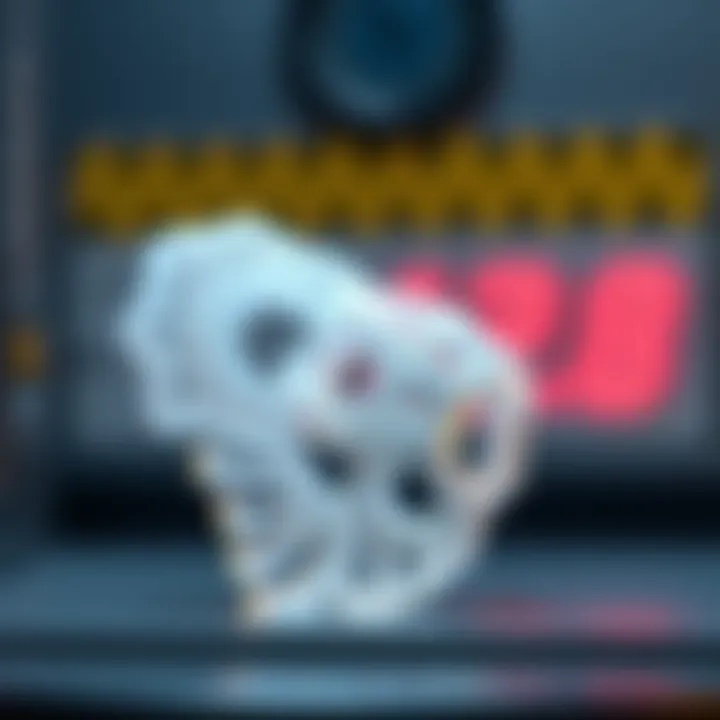
In recent years, interdisciplinary research has surged to the forefront of innovation, especially within realms like Computer-Aided Manufacturing (CAM) and 3D printing. The convergence of diverse disciplines can foster new insights, methodologies, and technologies that revolutionize the way industries understand and implement CAM.
The need for collaboration is multifaceted. Bringing together experts from engineering, materials science, computer science, and design can lead to breakthrough ideas that might remain undiscovered in a more siloed approach. Various fields possess unique competencies. For instance, insights from material scientists can lead to better choices in filament, while collaboration with software developers can enhance user interfaces and machine learning capabilities.
Moreover, there are significant benefits that accompany interdisciplinary approaches. They can:
- Enhance Innovation: Two heads are better than one; this adage rings true in interdisciplinary teams. By combining expertise, new ideas flourish, paving the way for novel applications of CAM technology.
- Broaden Skill Sets: Participants gain exposure to methodologies and techniques outside their usual domain, enriching their personal and professional growth.
- Impact Real-World Problems: Problems in industry are often multifaceted, requiring integrated solutions that consider technical, environmental, and societal aspects.
Yet, it is essential to consider the challenges that may arise when different fields collaborate. Differences in terminology and methodologies can lead to misunderstandings. A genuine effort must be made to ensure all parties recognize and value each other's contributions.
In a rapidly evolving industry, collaboration isn't merely beneficial; it is essential. As CAM technology becomes more sophisticated and integrated within 3D printing processes, the need for insights from varied disciplines becomes ever more apparent. In this light, there lies a vast potential for collaborative innovation that can transform manufacturing as we know it.
Collaboration Across Fields
Collaboration across fields has emerged as a cornerstone for research and development in CAM and 3D printing. This trend transcends traditional boundaries of study, resulting in partnerships that combine expertise from diverse areas.
A few key areas where collaboration has proven fruitful include:
- Engineering and Design: Here, designers work closely with engineers to ensure that concepts translate effectively into manufacturable products. This cooperation helps avoid potential pitfalls in the production phase.
- Computer Science and Material Science: Integrating software and hardware systems that are compatible with advanced materials opens new doors. For example, programming that anticipates material reaction can enhance processing accuracy and quality.
- Business and Production Management: Economics and technology intertwine when business developers team up with manufacturing specialists. Their understanding of market needs helps dictate the development of new tools and techniques.
This multidimensional approach prompts the question of whether academia and industry can find common ground. Academic institutions can partner with companies to explore experimental designs, driving innovation through research funding and initiatives that benefit both parties.
"Sometimes, the best insights arise when boundaries blur between disciplines. Collaboration reveals solutions buried under layers of specialization."
While navigating the complexities of varying field methodologies may seem daunting, the resultant knowledge can lead to the kind of breakthroughs that drive industries forward. In this space, continued growth will depend on the willingness of professionals to share insights and embrace unconventional partnerships.
Ethical Considerations in CAM and 3D Printing
In the rapidly evolving landscape of Computer-Aided Manufacturing (CAM) in 3D printing, ethical considerations play a pivotal role. As manufacturers embrace this powerful technology, the implications of its adoption extend beyond mere production benefits. It entails diving into a pool of moral dilemmas, shaping not only the industry but also society at large. Thus, considering the ethics surrounding CAM and 3D printing is absolutely crucial for sustainable and responsible innovation.
Intellectual Property Issues
One of the thorniest ethical challenges involves intellectual property rights. The ease of replicating designs in 3D printing introduces a tricky situation where the line between innovation and infringement can blur. Creators can find their intellectual property being replicated without permission, leading to potential financial losses and diminished motivation for original creation.
"If we do not address the intellectual property issues surrounding 3D printing, we risk hampering creativity and innovation in the industry."
The fundamental question then becomes: How do we protect creators while promoting advancement? Various approaches address this quandary:
- Creative Commons Licensing: Some designers choose to license their work openly, allowing others to use and modify it under certain conditions. This can foster collaboration while safeguarding the creator’s rights.
- Patents and Trademarks: These legal protections are critical in defining ownership in the current system. However, the processes can be lengthy and costly for innovators, especially for small businesses.
- Copyright Issues: The use of software to create designs can complicate copyright matters. Many times, what happens in a digital realm doesn’t easily translate into legal statutes, leaving creators vulnerable.
The implications of not addressing these issues may lead to a stagnation of creativity. The balance between accessibility and protection is delicate and requires thoughtful engagement from all stakeholders, including manufacturers, designers, and legal frameworks.
Furthermore, businesses utilizing CAM in 3D printing must navigate international intellectual property laws, which vary significantly across countries. This complexity might deter some entrepreneurs from venturing into the industry, potentially stifling innovation.
Case Studies
Case studies play a pivotal role in understanding the evolution and practical implications of Computer-Aided Manufacturing (CAM) in 3D printing. By providing concrete examples of real-world applications, these studies help to illustrate the effectiveness and versatility of CAM technologies. They reveal how various industries have successfully integrated CAM into their processes, offering insights into the benefits and challenges that can arise.
The examination of case studies not only highlights successful implementations but also sheds light on the nuances and intricate details that come with the technology. Below are some specific elements and considerations that underscore the importance of case studies in this field:
- Practical Insights: Case studies present detailed accounts of how organizations use CAM within their 3D printing workflows. These narratives provide valuable lessons that can be applied across different sectors, bridging the gap between theory and practice.
- Highlighting Success: By showcasing successful implementations, case studies serve as inspirational beacons for other industries. They demonstrate the achievable outcomes from effective CAM integration, motivating organizations to explore similar advancements.
- Addressing Challenges: Every implementation has its hurdles. Detailed analyses in case studies show how certain challenges—be it technical difficulties, material constraints, or regulatory issues—were managed or overcome. This learning can be essential for other entities aiming to adopt similar technologies.
- Diverse Applications: Industries ranging from aerospace to medicine provide a variety of contexts where CAM can flourish. Case studies encapsulate this diversity, showcasing tailored solutions and applications that resonate specifically with the needs of each sector.
"The value of case studies lies in their ability to bridge theory with real-world challenges and achievements, making them indispensable in the journey of CAM within 3D printing."
Successful Implementations
Successful implementations offer an extensive look into how companies have effectively utilized CAM within 3D printing, ensuring their competitive edge in varying markets. Several notable examples illustrate the myriad ways that CAM meshes with additive manufacturing, producing significant benefits across industries.
- Aerospace Advancements: A major aerospace manufacturer, known for its commitment to innovative design, utilized CAM to revolutionize their prototyping process. This shift allowed for quicker iterations and reduced material waste, enabling faster turnarounds on crucial components.
- Medical Customization: In the medical field, a healthcare provider implemented CAM to produce patient-specific orthopedic implants. This application not only enhanced surgical outcomes but also minimized time in the operating room by providing bespoke solutions tailored to individual needs.
- Automotive Efficiency: One automotive supplier adopted CAM to streamline the production of complex parts. The fusion of cutting-edge CAM software with their existing 3D printers facilitated greater precision and speed in manufacturing processes, resulting in a notable reduction in production lead times.
- Consumer Goods Innovation: A fast-fashion company leveraged CAM to personalize their offerings, producing customized clothing at high speed. By integrating CAM effectively, they reduced the time from design to market, enabling them to respond rapidly to consumer trends.
In each case, moving to CAM in 3D printing has resulted in tangible benefits—be it through increased productivity, cost savings, or enhanced product quality. These successful implementations showcase the potential of CAM technologies and set the stage for future innovations.
For those interested in digging deeper into CAM applications in various industries, resources like Wikipedia and Britannica provide excellent foundational knowledge. Additionally, communities on platforms such as Reddit can offer real-time discussions about ongoing advancements and experiences related to CAM in 3D printing.
Ending
In wrapping up our exploration of Computer-Aided Manufacturing (CAM) in 3D printing, it becomes clear that the significance of this technology is not merely a passing trend, but a cornerstone for innovation in manufacturing. As we dissected the historical origins and analyzed contemporary applications, we uncovered the transformative power CAM holds across various industries.
The articles we've reviewed echo a common theme: the integration of CAM into 3D printing enhances efficiency, precision, and speed, thereby redefining traditional manufacturing processes. The ability to swiftly turn abstract digital designs into tangible objects revolutionizes workflows, allowing industries to respond rapidly to market demands while minimizing waste.
Key Elements to Consider:
- Efficiency and Speed: CAM streamlines manufacturing, allowing for quicker turnaround times and reduced lead times.
- Cost Reduction: By merging design and manufacturing, companies can save substantial costs that would otherwise arise from multiple steps in production.
- Innovation Boost: The combination of CAM and 3D printing fosters an environment ripe for creative solutions, enabling designers to push the limits of what’s possible.
Moreover, as we look ahead to future trends and emerging technologies, the role of CAM in 3D printing will only grow. Sustainability initiatives will be paramount, as the demand for eco-friendly practices intensifies across the globe. The evolution of software and hardware platforms promises to further simplify processes, making CAM even more accessible to a broader audience.
"Embracing CAM in 3D printing is not just about adapting to change; it’s about driving it."
As professionals, educators, and researchers in the field, it is vital to understand these dynamics to foster ongoing dialogue about best practices, challenges, and advancements in the industry. Addressing ethical considerations, breakin down regulatory barriers, and collaborating across disciplines will be crucial steps in maximizing the potential of CAM in 3D printing technology. The conclusion drawn here is that we are witnessing not just the evolution of a technology, but the future of manufacturing that honors creativity, efficiency, and sustainability.







